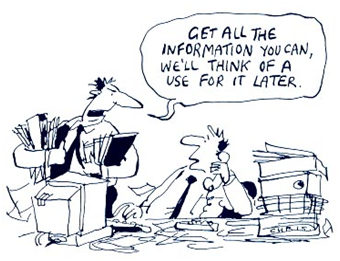I often meet recently cleared or about ‘about-to-be’ Chartered Accountants. Many a times, I also bump into commerce or business graduates (recently, even engineers)! When they seek an opinion on various career alternatives, I ask them a question ‘What is your dream job?’I commonly receive ‘no-tax-no-audit’ or ‘Finance’ as an answer.
Though the fat pay-packages, number-crunchingand analytical nature of the job are some of the things that attract people to finance jobs, entry-level roles in these jobsare not devoidof some really mundane and routine tasks, if not as repetitive as audit, still enough to be grinding!

1. DATA DIGGING
This involves tasks like finding information on comparable companies, their financials and quarterly results, past M&A transactions, management interviews, industry size and growth data, regulatory environment, recent developments, various business models etc. Sometimes, this could be based on inputs from the management.Though, frequently, this research involves going through numerous public data and documents thatare lying scattered on the internet.

The hard part is you may not get any information,which leads to endless and sometimesmindless browsing. The job also requires sourcing primary information rather than relying on secondary. An analyst from large investment banks like Morgan Stanley or Goldman Sachs may have access to databases, but you may not have such databases at boutique banks. Further, a very new industry or sector, the data may just not exist!
2. GOING THROUGH LARGE DOCUMENTS: Some examples of such documents are annual reports, industry reports (if available), call transcripts, management interviews, sector opinions, legal agreements, regulatory information, project reports, past information memorandums. Important insights for seniors. You are not expected to miss lines, as some very important information might be within those lines. Dare miss the huge shareholding related data, as it may have some options or convertibles data which may impact your EPS!
The analysts are expected to sort the relevant documents, rename files logically, save them in correct, easily accessible folders.
3. UPDATING: If creating something is exciting, then brace yourself for the most unexciting job, Updating. There may be old models, share-price history, company profiles, research reports or presentations. The seniors always need to be on their toes for most-recent situation. There could be updates in terms of recent result announcements, regulatory or other developments, new business situation or just a huge change in assumptions and scenarios. In Equity research, after initiating coverage on a company, it’s all about result updates and updating recommendations based on the same. In Investment banking, pitches that may take ‘forever’ to materialize into an actual transaction.
What this means for an analyst could be a long, late-night sessionsevery result season. The late-sittings are full of going through recent results and punching-in the quarterly or annual numbers for all companies. You have to have an eye for details like visible trends as well as exceptional, one-off items or extra-ordinary developments.

4. RE-WORDING & EDITING:

‘Crisp’ is the most-often used adjectivesin this industry, when it comes to presentations, write-ups, profiles and e-mails! What this means is multiple rounds of editing-editing-editing to make your write-ups succinct and to-the-point. It also means rewording for different situations and positioning. You need to be really good at summarizing and cutting down paragraphs to lines and line to just a few words. No surprises if you are found taking hours initially just before clicking send tab of your email.
5. FORMATTING:

This task is all about improving the ‘look-n-feel’ because what looks appealing sometimes just stands a better chance. Though, what this translates into is aligning and resizing shapes on a slide, bringing consistency in charts, fonts, shapes, pictures and colours and a just lot of MS PowerPoint or Word stuff.
6. COMPANY AND INDUSTRY PROFILES: This is one important part of reports, information memorandums and presentations. The outputs for these may be simple one-pagers, but the documents and data that need to be analyzed to create these may run into tens to hundreds of pages! The common elements include about the company’s business model, recent financials and commentary, management bios, share-price history, news updates.
Again, once created, you can’t escape editing, formatting and updating these!
7. ABOUT US, DEAL TOMB-STONES & LEAGUE TABLES PAGE: This is one of the most important slide or page in a pitch to a client.Every time when presenting to a client in a different sector, it may need some changes. Also, as the firm keeps on proudly adding new transactions under its belt, this page undergoes a change. Lot of MS PowerPoint, Word work.
So, in addition to number-crunching, you better develop special love for these tasks too!
Though all the above may appear to be a dampener to your dream job, be assured that high proficiency in using keyboard shortcuts and other MS-Office efficiency tools can not only help you get home an hour earlier, but might also help you escalate faster in the organization.
Confidently & quickly create your own financial models learn Financial Modeling by CA Ashutosh








 CAclubindia
CAclubindia
